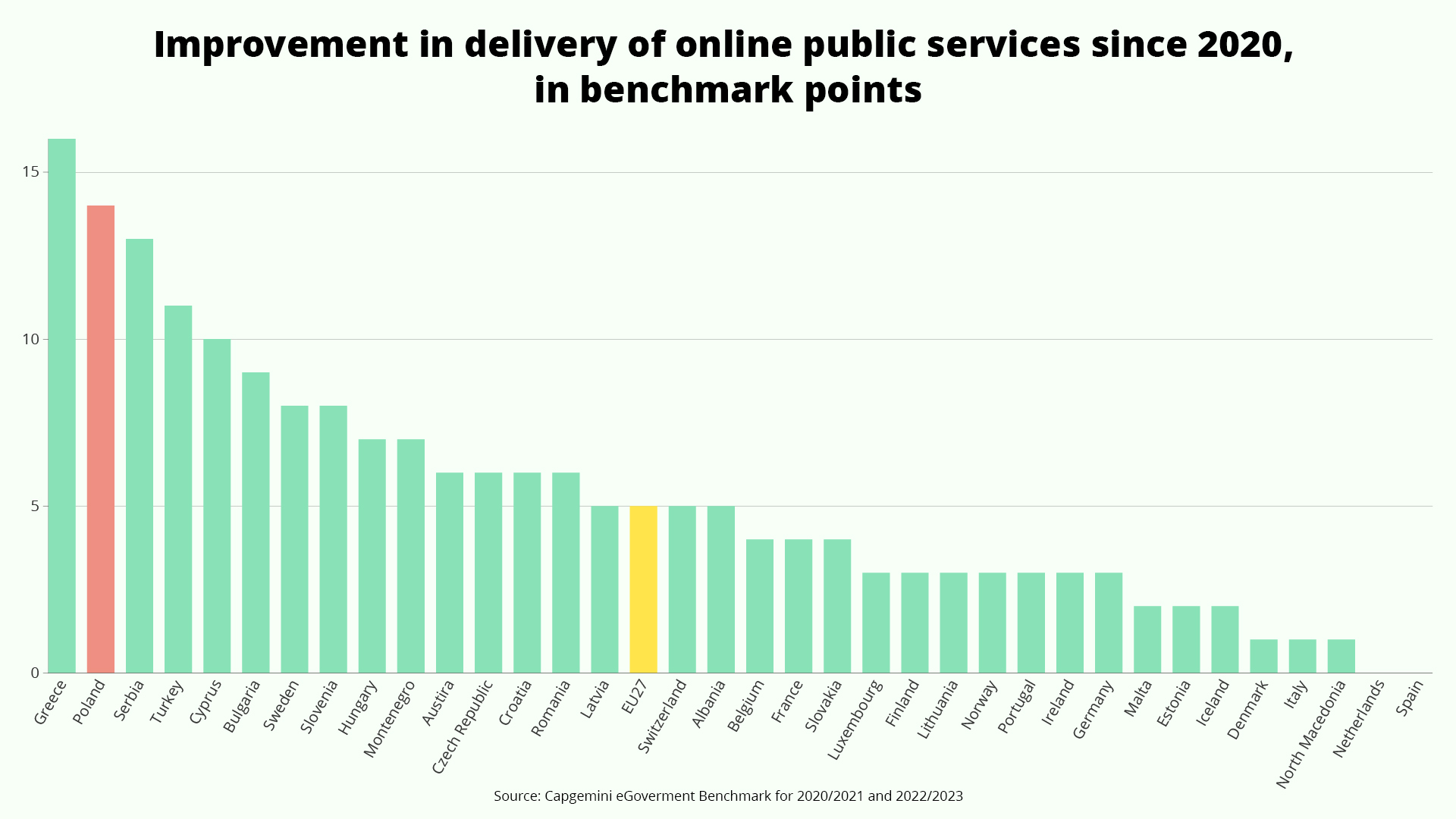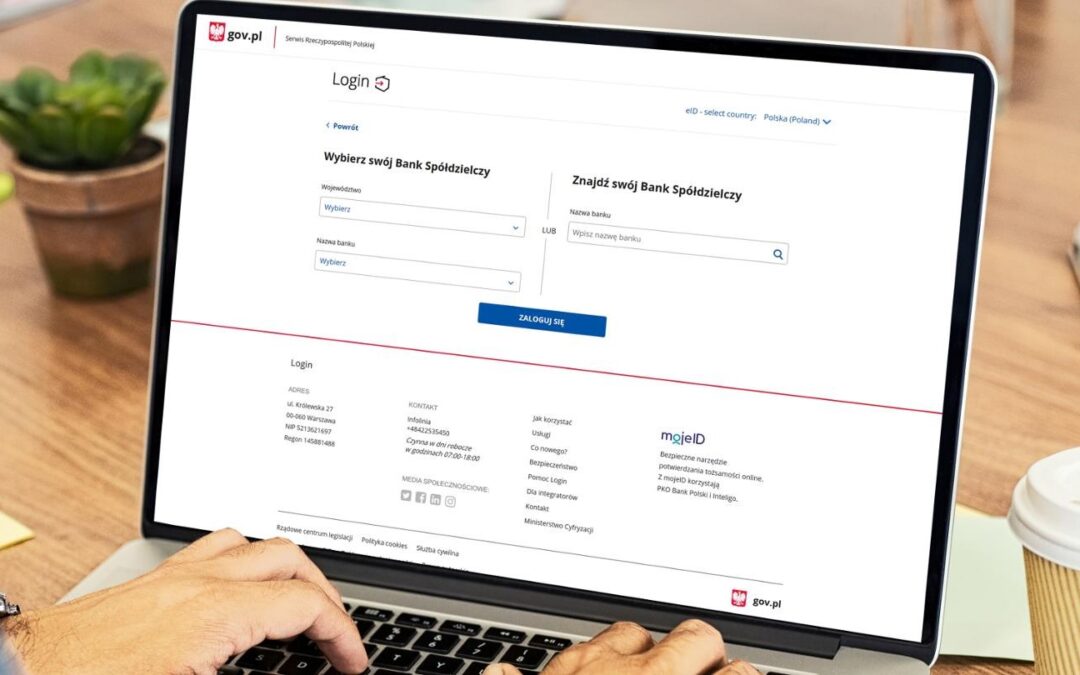Poland has recorded Europe’s second-largest improvement in the digitalisation of public services since 2020.
In the latest edition of the eGovernment Benchmark, a study prepared by consultancy company Capgemini for the European Commission, Poland rose to an average biennial score of 69 out of 100 for the period covering 2022 and 2023. That was up from 62 in the 2021/2022 period and 55 in 2020/2021.
That gave Poland the second-largest improvement among the 37 countries covered by the study since its 2020/2021 edition, behind only Greece, which rose 16 points from 52 to 68.

However, in absolute terms, Poland’s score remains below the European Union average of 76. The top-scoring countries are Malta (97 points), Estonia (92) and Luxembourg (90).
The worst results overall were found in Moldova (32) and North Macedonia (36) while the lowest among EU member states were Romania (48) and Cyprus (60).
“For several years now, the level of availability of online public services has been really high in Poland, and it is clear that we are still developing in this respect,” said Marek Woźny of Capgemini Poland, quoted by the Polish Press Agency (PAP).
“In many areas of digitisation, we are rated above the European average. This is the case, for example, with the availability of online help or support for users. Polish government websites scored 100 points here, with the European average at around 90,” he added.

The study covers all 27 EU Member States, three European Free Trade Association countries (Iceland, Norway and Switzerland) and seven EU candidate countries (Turkey, Serbia, Ukraine, Albania, Montenegro, North Macedonia and Moldova).
It evaluates online public services on four dimensions:
- User-centricity (To what extent are services provided online? How mobile friendly are they?)
- Transparency (Are public administrations providing clear, openly communicated information about how their services are delivered?)
- Key enablers (What technological enablers are in place for the delivery of eGovernment services?)
- Cross-border services (How easily are citizens from abroad able to access and use the online services?)
The four dimensions are further broken down by 14 indicators. To prepare the ranking, Capgemini examined an average of 396 government websites per country for EU countries and 403 websites for other countries.
Sorry to interrupt your reading. The article continues below.

Notes from Poland is run by a small editorial team and published by an independent, non-profit foundation that is funded through donations from our readers. We cannot do what we do without your support.
Indicators in which Poland scored above the EU average are transparency of service design, access to electronic identification, electronic documents, and pre-filled forms.
In the main dimensions, Poland recorded the biggest increase in transparency, improving its score by 23 points on the previous edition to 65. It also recorded solid growth in the key enabler dimension, moving up 15 points to 76.
In user-centricity, Poland scored 90 points (up one point), and in cross-border services it achieved 43 points (up six points).
In recent years, Poland has introduced the possibility to use many public services digitally, including the mObywatel application instead of a physical ID card and electronic medical prescriptions.
Poland ranks second in Europe in terms of the openness of public data, according to an @EU_Commission report, which names the country as a "trendsetter" https://t.co/ofpXCqXaL3
— Notes from Poland 🇵🇱 (@notesfrompoland) January 4, 2024
Main image credit: Ministerstwo Cyfryzacji (under CC BY-NC-ND 3.0 PL)

Alicja Ptak is deputy editor-in-chief of Notes from Poland and a multimedia journalist. She has written for Clean Energy Wire and The Times, and she hosts her own podcast, The Warsaw Wire, on Poland’s economy and energy sector. She previously worked for Reuters.



















